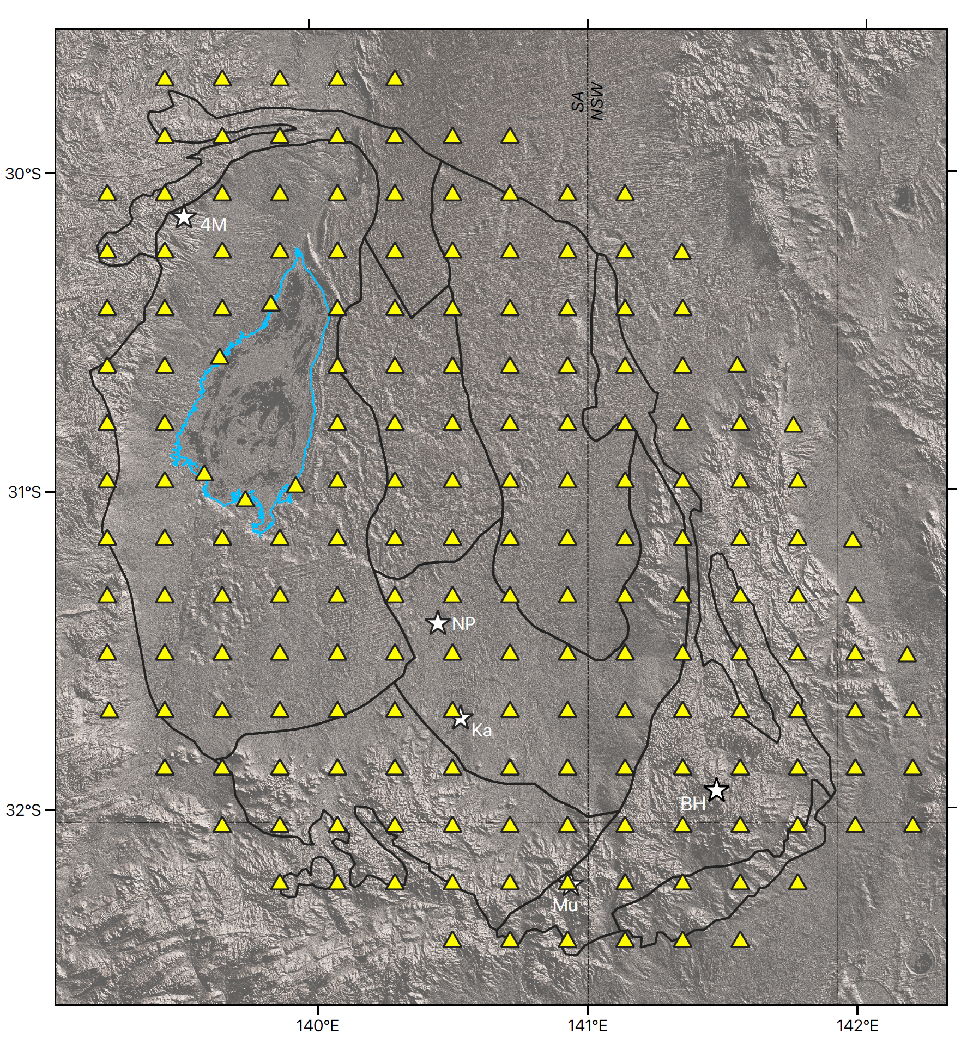The Curnamona Cube
Fly across remote Australia in a helicopter, for one of the world's biggest geophysical science projects.

Extent of the Curnamona Province. Mines and major deposits are shown as white stars (BH - Broken Hill; Ka – Kalkaroo, NP – North Portia, Mu – Mutooroo, 4M – Four Mile).
The University of Adelaide, in collaboration with ANU and the University of Melbourne, have recently been funded $1 Million by AuScope to undertake a major geophysics program across the Curnamona Province.
The project will also include the State Geological Surveys of South Australia and New South Wales, the federal agency Geoscience Australia, and industrial partners from the space technology and mineral exploration sectors. The Curnamona Province is a greenfields environment for mineral exploration due to extensive and deep sedimentary cover. We will collect two world-class datasets for research, government and industrial communities:
- Curnamona Cube. 200 MT and 200 seismic sites in a 20 km grid across the Curnamona Province over two years (yellow triangles). Survey dimensions 300 km by 300 km will generate data and models infrastructure from the surface to a depth of 300 km;
- Curnamona Telescope Super Site. As a pilot Super Site, we will establish a small grid of long-deployment MT, passive seismics and heat-flow needle probes close to the Kalkaroo deposit.
Two Honours projects are available, to work on separate data sets:
- The Curnamona Cube MT Model. The student will be involved with the collection, processing, modelling and interpretation of 200 broadband MT sites, and developing 3D resistivity models with the new and legacy MT data sets.
- Curnamona Telescope Super Site. Establishing a long-deployment site of a small grid of MT, seismometers and heat probes will require significant technological challenges, and we seek a student with a strong interest in instrumentation and data analytics. The long-baseline collocated instruments will provide a unique research opportunity to view deep into the Earth.

Supervisors
Dr Graham Heinson, Dr Stephan Thiel and Dr Kate Robertson
Research area: Mineral and energy systems, Tectonics and solid earth processes
Recommended honours enrolment: Honours in Geology
